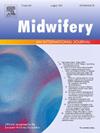妇女和医疗保健专业人员关于预防妊娠相关的骨盆带痛的见解:定性内容分析
IF 2.5
3区 医学
Q1 NURSING
引用次数: 0
摘要
问题妊娠相关的骨盆带痛(PPGP)是妊娠期间常见的并发症,影响女性的身体、情绪和职业健康。尽管有这种负担,但预防战略的证据有限。与症状管理相比,ppgp预防受到的关注较少。现有的产前保健缺乏针对PPGP的标准化预防指导。目的以健康信念模型(Health Belief Model, HBM)为指导框架,探讨孕妇和医护人员(HCPs)对预防产后gp的认知和信念。方法采用半结构化访谈的方法,于2024年5月至8月对孕妇(有和没有PPGP)和HCPs(助产士、全科医生、物理治疗师和研究人员)进行定性内容分析研究。28名参与者达到数据饱和。使用定向内容分析分析访谈记录,以确定与HBM结构相对应的主题。发现了八个关键主题。妇女报告说,对PPGP预防的认识有限,指导也不一致,然而,她们表示愿意参与预防行为。卫生保健提供者强调了系统性差距,包括获得物理治疗的机会有限和关于PPGP预防的信息不足。两组都认为体育活动、早期教育和多学科护理对预防至关重要。障碍包括职业需求、文化耻辱、财务问题和缺乏自我管理的信心。本研究强调了早期、结构化和多学科干预的必要性,这些干预与妇女的信念和需求相一致,以有效预防PPGP。结论妇女和医务人员的见解强调了解决产前保健中的主要障碍可以减轻PPGP负担,促进PPGP预防。本文章由计算机程序翻译,如有差异,请以英文原文为准。
Insights from women and healthcare professionals about preventing pregnancy-related pelvic girdle pain: A qualitative content analysis
Problem
Pregnancy-related pelvic girdle pain (PPGP) is a common complication during pregnancy, affecting woman’s physical, emotional, and occupational well-being. Despite this burden, there is limited evidence for prevention strategies.
Background
PPGP prevention has received less attention compared to symptom management. Existing antenatal care lacks standardised prevention guidance for PPGP.
Aim
This study aimed to explore the perceptions and beliefs of pregnant women and healthcare professionals (HCPs) on PPGP prevention, using the Health Belief Model (HBM) as a guiding framework.
Methods
A qualitative content analysis study using semi-structured interviews with purposively sampled participants, including pregnant women (with and without PPGP) and HCPs (midwives, general practitioners, physiotherapists, and researchers) was conducted from May to August 2024. Data saturation was reached with 28 participants. Interview transcripts were analysed using directed content analysis to identify themes corresponding to HBM constructs.
Findings
Eight key themes emerged. Women reported limited awareness and inconsistent guidance on PPGP prevention, however, they expressed willingness to engage in preventative behaviours. HCPs highlighted systemic gaps, including limited access to physiotherapy and insufficient information about PPGP prevention. Both groups identified physical activity, early education, and multidisciplinary care as critical to prevention. Barriers included occupational demands, cultural stigma, financial concerns, and lack of confidence in self-management.
Discussion
This study highlighted the need for early, structured, and multidisciplinary interventions aligned with women’s beliefs and needs to effectively prevent PPGP.
Conclusion
Women and HCPs insights highlighted that addressing key barriers in antenatal care could reduce PPGP burden and promote PPGP prevention.
求助全文
通过发布文献求助,成功后即可免费获取论文全文。
去求助
来源期刊

Midwifery
医学-护理
CiteScore
4.50
自引率
7.40%
发文量
221
审稿时长
13.4 weeks
期刊介绍:
Midwifery publishes the latest peer reviewed international research to inform the safety, quality, outcomes and experiences of pregnancy, birth and maternity care for childbearing women, their babies and families. The journal’s publications support midwives and maternity care providers to explore and develop their knowledge, skills and attitudes informed by best available evidence.
Midwifery provides an international, interdisciplinary forum for the publication, dissemination and discussion of advances in evidence, controversies and current research, and promotes continuing education through publication of systematic and other scholarly reviews and updates. Midwifery articles cover the cultural, clinical, psycho-social, sociological, epidemiological, education, managerial, workforce, organizational and technological areas of practice in preconception, maternal and infant care.
The journal welcomes the highest quality scholarly research that employs rigorous methodology. Midwifery is a leading international journal in midwifery and maternal health with a current impact factor of 1.861 (© Thomson Reuters Journal Citation Reports 2016) and employs a double-blind peer review process.
 求助内容:
求助内容: 应助结果提醒方式:
应助结果提醒方式:


